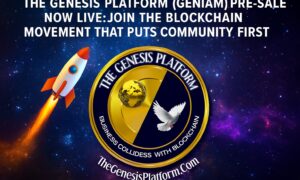Blockchain has certainly changed how the world interacts at the digital level. Pioneered by Bitcoin and fundamentally changing our perception as to the limitless applications by the Ethereum platform, the vast usage of the technology keeps on surprising even the most supporters.
Recently, a new platform, called the Codex has kicked off its ecosystem of management of unique assets, specially the arts and crafts industry. The global wealth of A&C is estimated to be around the 1.6 trillion dollar mark, with a significant increase projected to USD 2.7 trillion by 2026.
Registry of Sales And The Current Market Situation
Items such as art and other collectibles can be of very high value. To keep collectors and sellers safe from fraud, every auction house in the world keeps a registry of sales and purchases. This allows them to keep a record of where the item was purchased from and to whom was it sold. Yet, each auction house keeps an independent record, creating a very fragmented filing that is bound to end up with human errors, accidental or not.
Another issue faced by purchasers and sellers is that unless they have the right connections, selling is not done directly. The auction houses have become centers where people congregate to buy and sell valuable items. For their services, the auction houses take a significant portion of the sales as commission.
The buyer is always at a risk of fraud. With so much private and public auctions, there is always a chance that the item being bought is not real. For very highly sought after items, sales are usually done in private and since there is no public appraisal of the item being purchased, the buyer is yet again at a risk by paying far more than the item’s worth.
Why Codex Is The Solution
Codex, being a decentralized ledger technology platform that relies on blockchain, offers a number of advantages that makes it the ideal ecosystem for expensive arts and collectible items. Through blockchain, it offers:
- Immutable Data: Once a transaction detailing about the buyer and the seller is written, it cannot be altered, reducing the possibility of a forgery to near zero
- End To End Data: Blockchain’s effective storage of data means that the data of a particular item will be available completely, from its first purchase to the last.
- Defragmentation of Record: Since a single platform will hold records of all items, the fragmented record keeping and its inefficiencies will be a thing of the past.
- Multiple Backups: With anyone being able to download the complete registry, there is no master record and any damage to one or multiple computers will not mean loss of data.
- No Commissions: Since Blockchain relies on a peer to peer connection, there will be no need of auction houses to set up sales and consequently, buyer and seller will save on the commissions.
- Instant Transfer: The near instant transfer of digital tokens, representing real world value, will mean that buyer and seller will enjoy money transfers without any delays. Another saving exists from this since there will be no bank or financial institution involved and consequently, no transaction charges exist.
- Smart Contracts: The automation of blockchain allows automated transfer of asset ownership and money, without the need of a guarantee.
What Codex Offers?
Codex, as a protocol is specifically designed as an asset registry, tailor made for the arts and collectibles market. For this, the protocol has some specific rules and regulations within the platform:
- Ownership record when the item in question is first migrated to the blockchain.
- A complete metadata with items pictures, proof of ownership, appraisals, etc.
- Validators: These are people who verify the above information and are responsible for future disagreements. Validator include experts such as auction houses specialists, dealers, art gallery owners and other appraisers from all around the world.
- Application Layer: Since blockchain is complex to code or write, developers will be allowed to create apps that would act as a secondary layer to the platform, allowing users to interact and make purchases and sells. Other applications of third party developers include insurances, asset backed loans, independent appraisals and much more.
CodexCoins, Powering Assets
The Codex platform utilizes the ability of blockchain to create digital tokens that represent value and will be the default medium of exchange in the ecosystem. The platform will be using its own native CodexCoin, or CODX. The Ethereum based ERC20 standard tokens will be deployed on the ERC721 non-fungible token standard smart contract platform, making the token and the platform extremely secure.
The token will be going through its ICO in July, with the token being priced at USD 0.067 with one billion CODX up for grabs. Investors will need to commit at least 0.5 ETH to take a part in the sale and need to clear a whitelist/KYC procedure.


































